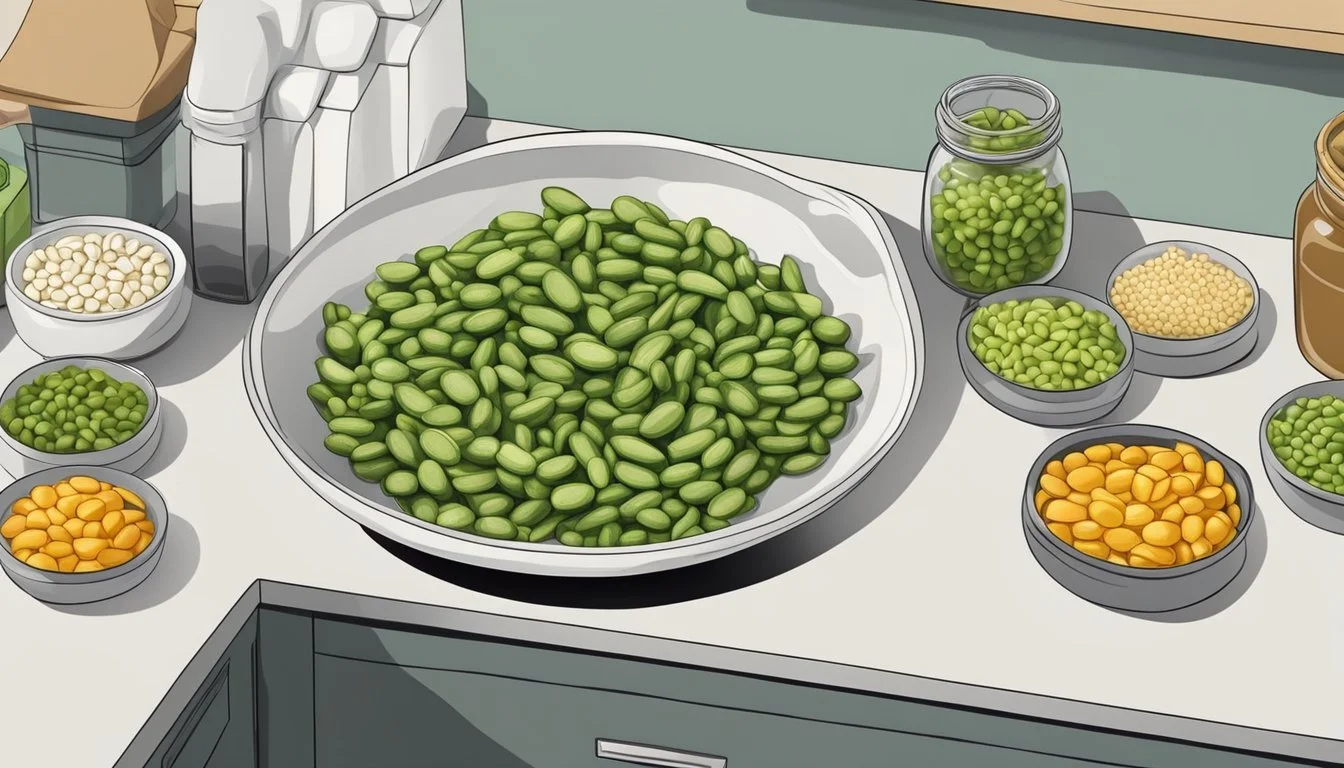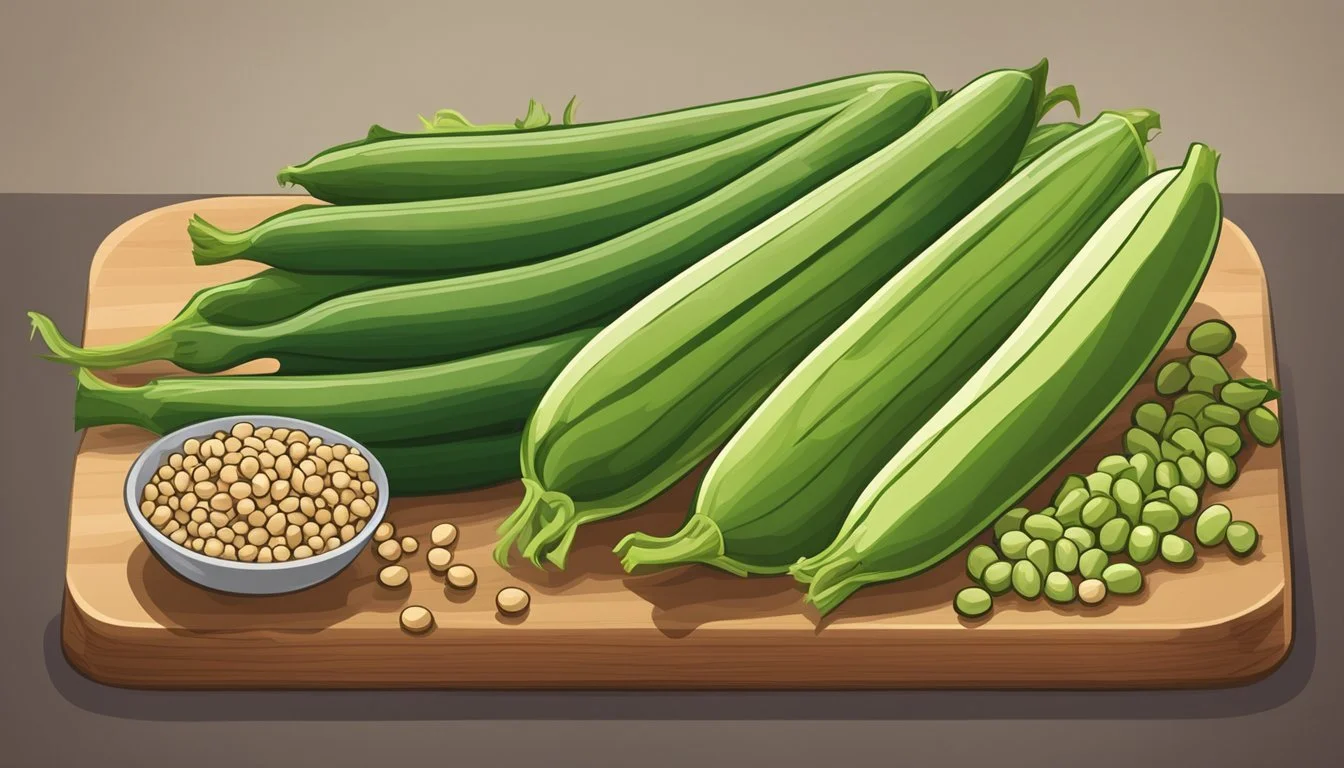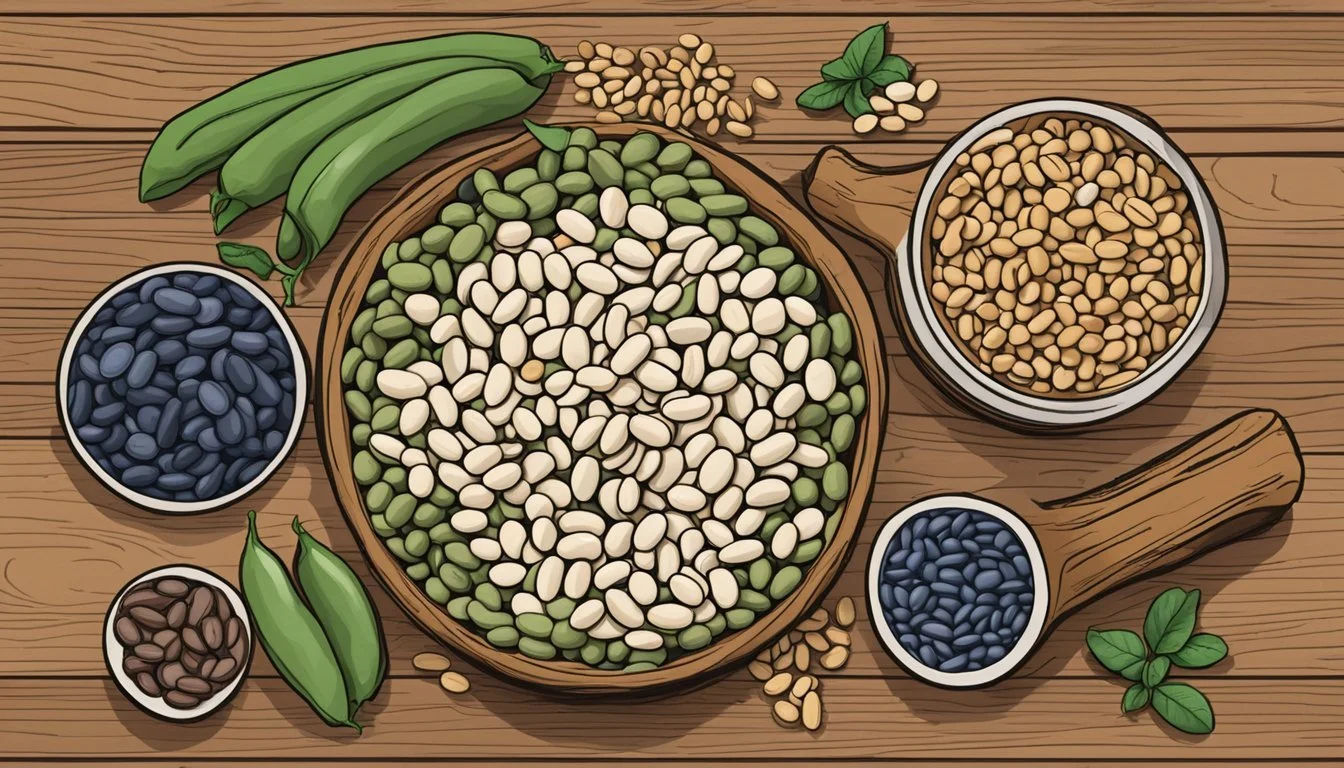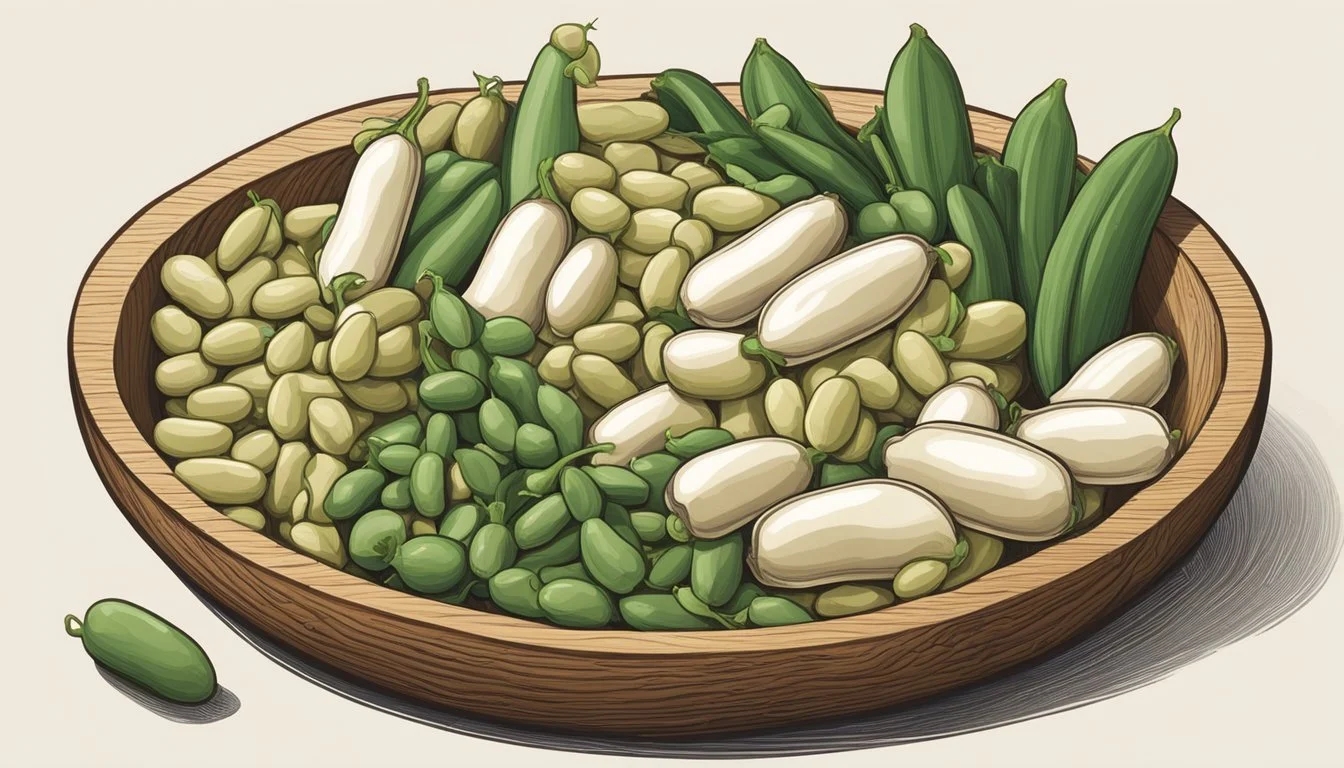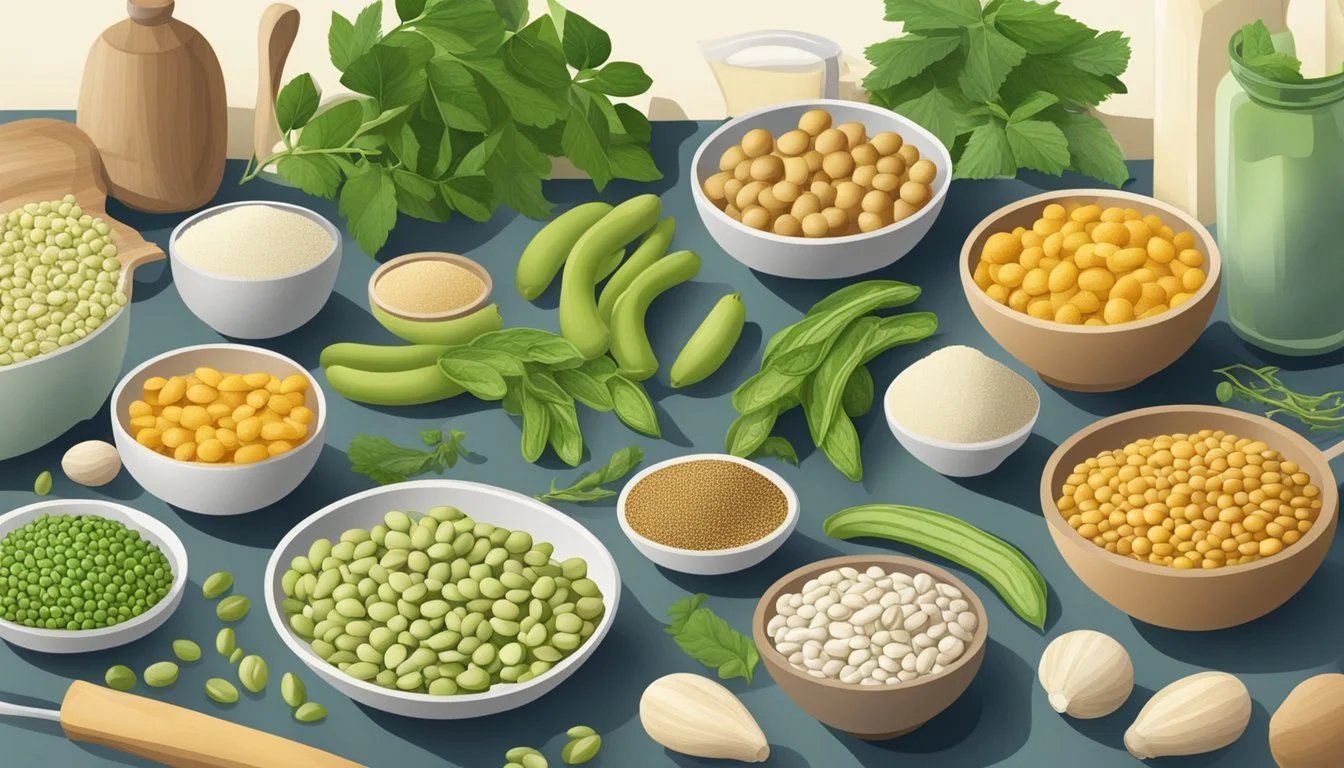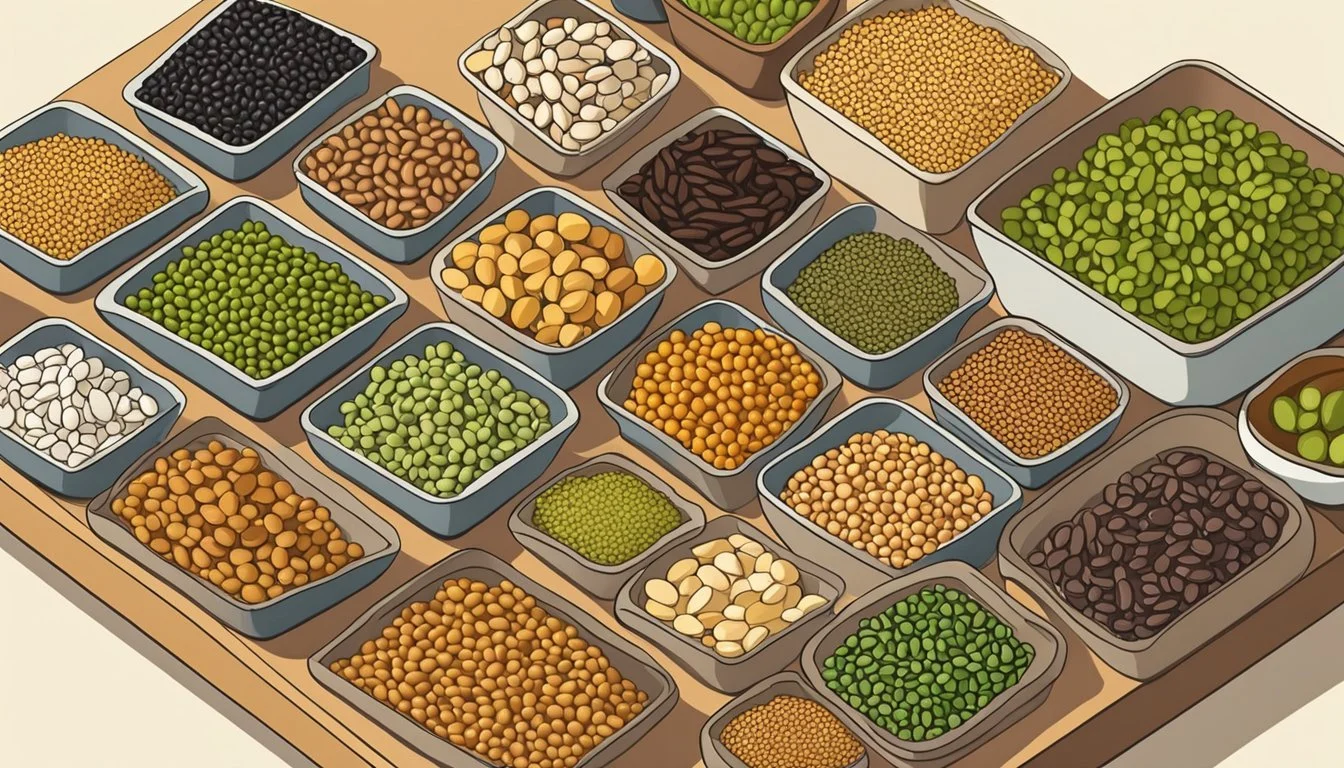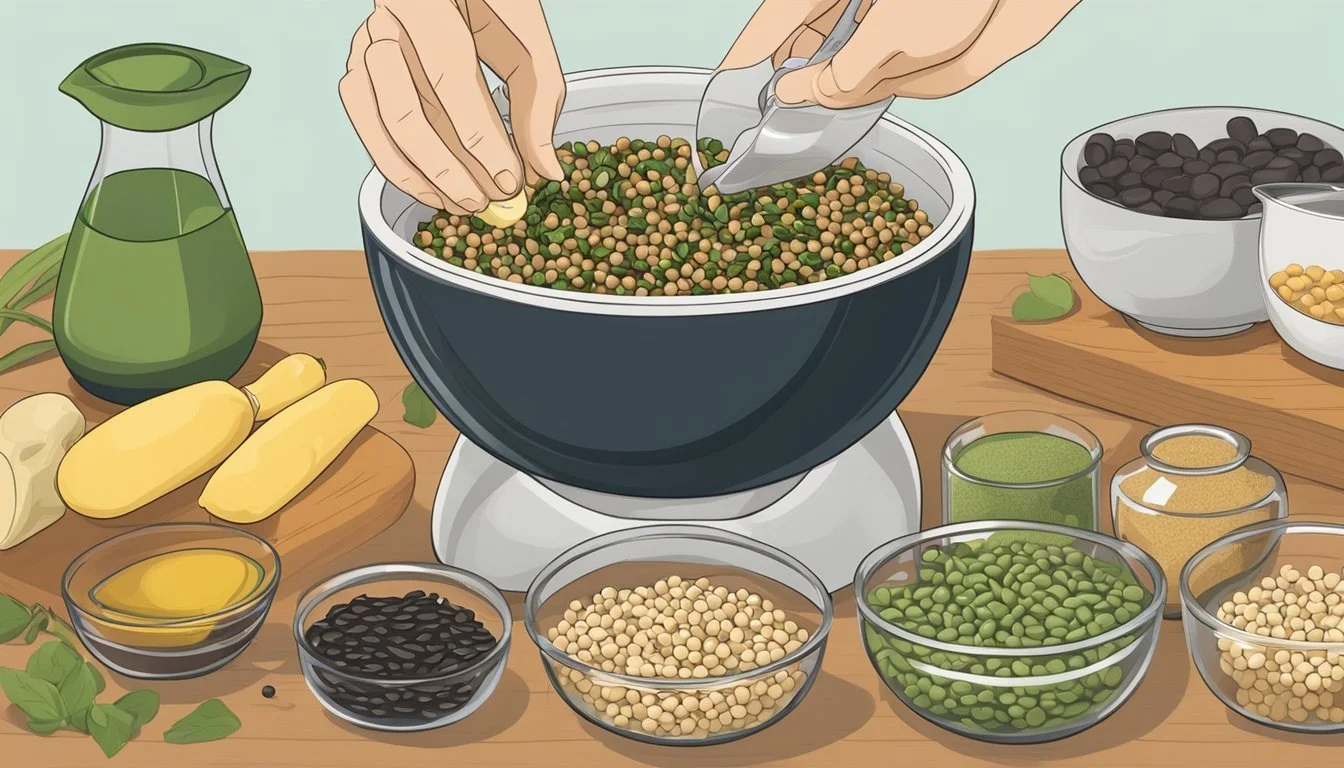Marrow Beans Substitutes
Best Alternatives for Your Recipes
Marrow beans, known for their creamy texture and meat-like flavor, have long been a favorite in Mediterranean and Middle Eastern cuisine. For those who can't find marrow beans, excellent substitutes are available, including navy beans, lima beans, and cannellini beans. Each of these alternatives offers a unique twist while maintaining the integrity of the dish's flavor and texture.
Navy beans, similar in size and nutrition to marrow beans, provide a comparable creamy texture and a slightly less intense flavor. Lima beans, with their buttery consistency, offer a distinct yet complementary taste, making them a reliable substitute in many dishes. Cannellini beans, a staple in Italian cooking, bring a smooth texture and mild flavor that works well in numerous recipes requiring marrow beans.
Cooking with these substitutes can accommodate dietary needs and preferences without sacrificing flavor or nutritional value. Whether pureed in soups, added to stews, or mixed into succotash, these beans bring versatility and appeal to any meal, making them invaluable in the kitchen.
Understanding Marrow Beans
Marrow beans stand out due to their large, plump shape and creamy texture, making them a versatile ingredient in various dishes. They originate from the Middle East but are popular in regions such as Italy and North America.
Characteristics of Marrow Beans
Marrow beans are large white beans known for their plumpness. They have a distinctive creamy texture and a flavor profile that some compare to meat or bacon. This unique taste and texture make them ideal for adding richness to recipes. Historically, marrow beans were a staple in North American diets during the 1800s. Their notable size, along with their meat-like quality, makes them easily distinguishable from other beans.
Culinary Uses
Marrow beans can enhance a wide variety of dishes. They are particularly well-suited for soups, where they can be pureed to add a creamy consistency. Additionally, they work well in stews, casseroles, and salads. Given their texture and flavor, they make an excellent meat substitute in vegetarian and vegan dishes. Canned marrow beans offer a convenient option as they are pre-cooked and only require heating before use.
Nutritional Profile
Marrow beans are nutritious and contribute significantly to a healthy diet. They are high in protein and fiber, which are essential for muscle repair and digestion. These beans also provide vital nutrients such as iron, magnesium, potassium, and calcium. They are low in fat and relatively low in calories, promoting a balanced and healthy diet. Including marrow beans in meals can help in meeting daily requirements for essential vitamins and minerals.
Identifying Substitutes for Marrow Beans
Marrow beans, known for their creamy texture and savory flavor similar to bacon, can be substituted with several other types of beans. These alternatives can be chosen based on their texture, flavor, and ease of use in various recipes.
Cannellini Beans as a Substitute
Cannellini beans, also known as white kidney beans, are a great substitute for marrow beans. They share a similar shape and size but have a milder flavor. Cannellini beans offer a creamy texture which makes them ideal for purees and soups. They are commonly used in Italian cuisine and can seamlessly replace marrow beans in most recipes. Their neutral taste allows them to absorb flavors from other ingredients well.
Navy Beans and Their Similarities
Navy beans are small, white beans that also work well as a replacement for marrow beans. They have a smooth, creamy texture that is perfect for soups and stews. Due to their mild, somewhat nutty flavor, they complement a variety of dishes without overpowering the other ingredients. Navy beans cook relatively quickly and are easy to find in most grocery stores, making them a convenient option.
Great Northern Beans
Great Northern beans are larger than navy beans but smaller than cannellini beans. They offer a firm texture that holds up well in slow-cooked dishes, making them an excellent choice for recipes that require long simmering times. Great Northern beans have a delicate flavor that pairs well with a variety of meats and vegetables, providing a versatile substitution for marrow beans.
Kidney Beans for a Meatier Texture
If a meatier texture is desired, kidney beans can be a suitable alternative. Although they are slightly larger and have a more robust flavor than marrow beans, they are particularly useful in hearty dishes like chili and casseroles. Red kidney beans, in particular, can add a substantial and satisfying element to meals that traditionally use marrow beans.
Lima Beans for Creaminess
For those seeking a more buttery and creamy texture, lima beans (often called butter beans) are an excellent substitute. They have a slightly sweet, earthy flavor that works well in soups and purees. Lima beans can be found fresh, frozen, or canned, making them a convenient option for various culinary needs. Their creamy consistency aligns closely with that of marrow beans, especially when pureed.
By selecting the right substitute, cooks can replicate the unique qualities of marrow beans in their dishes. Whether it's the creamy consistency of cannellini and lima beans or the meaty texture of kidney beans, these alternatives ensure versatility and flavor in a variety of recipes.
Other Legume Substitutes
When seeking alternatives to marrow beans, several legumes such as chickpeas, black beans, and lentils offer not only flavorful diversity but also similar textures and nutritional benefits. Each substitute aligns itself well with a variety of dishes, making meal preparation versatile and enjoyable.
Chickpeas as Versatile Alternatives
Chickpeas, or garbanzo beans, provide a nutty flavor and creamy texture, making them an excellent substitute in many dishes. They are particularly suitable for soups, salads, and stews due to their firm flesh. Nutritionally, chickpeas are rich in protein and fiber, which can complement a vegan diet effectively. Their versatility also extends to being ground into flour or used to create spreads like hummus.
Black Beans for Earthy Flavors
Black beans bring an earthy flavor and a slightly sweet taste to the table. Known for their robust flavors, they are ideal in hearty dishes such as soups, chili, and casseroles. These legumes are high in protein, fiber, and essential vitamins like folate. Black beans maintain their structure well during cooking, making them a reliable substitute in a range of recipes.
Using Lentils in Place of Marrow Beans
Lentils, with their diverse varieties such as green, brown, and red, are highly adaptable as substitutes for marrow beans. They cook quickly, requiring no pre-soaking, and are packed with nutrients such as iron, protein, and vitamins. Lentils have a slightly nutty flavor and can be used in soups, stews, and salads, providing both texture and nutrition.
Broad Beans and Fava Beans
Broad beans, also known as fava beans, offer a slightly sweet and nutty flavor, making them suitable for various culinary applications. They are particularly popular in Mediterranean and Middle Eastern cuisines. Fava beans are high in protein and dietary fiber, contributing to a healthy diet. Their firm texture works well in salads, dips, and purees, making them a versatile substitute.
Pinto Beans and Other Regional Variants
Pinto beans, known for their speckled appearance and creamy texture when cooked, are commonly used in Mexican and Southwestern dishes. They have a mild, earthy flavor and are excellent in refried beans, soups, and stews. Pinto beans also provide a good source of protein, fiber, and essential nutrients. Their adaptability makes them a fitting substitute for marrow beans in various regional recipes.
Alternative Ingredients Beyond Beans
In addition to beans, nuts, seeds, and various grains make for creative and nutritious substitutes in recipes. These options provide a range of flavors and textures suitable for diverse dietary needs.
Nut and Seed Options
Nuts and seeds can be excellent alternatives to beans for both vegans and vegetarians. Almonds, sunflower seeds, and pumpkin seeds offer a rich, creamy texture that works well in salads and grain bowls. Almonds can be sliced or chopped to mimic the size and bite of beans, adding a crunchy element. Sunflower seeds provide a nutty flavor that complements a variety of dishes, while pumpkin seeds bring in essential nutrients like zinc and magnesium.
Chickpea flour derived from ground chickpeas can also be used to create bean-free patties or as a thickening agent in stews and soups. For a smoother texture, tahini (sesame seed butter) can be added to sauces and dressings, offering a creamy, earthy taste unique from that of beans. Flexibility in usage and a nutrient-dense profile make nuts and seeds valuable substitutes.
Grains as Filling Substitutes
Grains such as quinoa, rice, and sorghum are fantastic substitutes for beans, providing both texture and nutritional benefits. Quinoa is a complete protein, making it a favorite among vegetarians and vegans. Its fluffy texture and subtle, nutty flavor make it versatile in dishes where beans would traditionally be used. Rice, particularly brown or wild rice, offers a chewy consistency, absorbing flavors well in soups and stews.
Sorghum is another grain option, being gluten-free and rich in fiber. It can be cooked similarly to rice or quinoa and used in salads, casseroles, and pilafs. For a more creamy texture, polenta made from ground cornmeal can act as a hearty, bean-free component in many recipes. These grains provide complex carbohydrates and important nutrients, making them ideal for balanced, healthy meals.
Preparation Techniques for Substitutes
When substituting marrow beans with other beans, it is crucial to understand the correct preparation techniques to achieve the desired texture and flavor. Proper soaking and cooking times, along with the right seasoning, are key to making a successful replacement.
Soaking and Cooking Times
Soaking is essential for dried beans. For instance, pinto beans and navy beans should be soaked in water for about 8-12 hours. This process rehydrates the beans and reduces cooking time.
For canned beans, no soaking is needed as they are pre-cooked.
Cooking times vary. Pinto beans require about 1.5-2 hours of simmering after soaking. Navy beans need approximately 1-1.5 hours. Canned beans only need to be heated through, usually taking about 10-15 minutes.
Seasoning for Flavor Enhancement
Effective seasoning is vital for achieving robust flavors. Adding salt during the final stages of cooking preserves the beans' tenderness. About 1 teaspoon of salt per pound of beans is recommended.
Garlic and other aromatics like onions can be sautéed before adding the beans to the pot. This builds a flavorful base.
To enhance the texture and flavor, consider adding bay leaves, thyme, or rosemary during cooking. A finishing splash of vinegar or lemon juice can brighten the dish.
Adapting these practices ensures that substitutes closely mimic the taste and texture of marrow beans.
Incorporating Substitutes into Recipes
Using substitutes for marrow beans can enhance the flavor and texture of various dishes. Whether you're making soups, salads, dips, or main courses, alternatives such as cannellini, butter beans, and navy beans can offer versatility in your cooking.
Substitutes in Soups and Stews
Cannellini beans are excellent for soups and stews. They have a mild flavor and creamy texture that works well in minestrone soup and pasta e fagioli. Marrow beans can also be replaced with butter beans for a richer, softer consistency in hearty dishes like chili and stews.
For a more robust stew, try kidney beans. They hold their shape well and impart a slightly earthy flavor, making them perfect for slow-cooked dishes and baked beans. Navy beans are another good choice, especially in creamy soups and curry-based stews.
Using Bean Substitutes in Salads
For bean salads, cannellini beans are a standout substitute due to their delicate texture and ability to absorb dressing flavors. Pinto beans can also substitute marrow beans, providing a slightly nutty taste that's ideal for taco salads and bean medleys.
Black-eyed peas are another viable option. They bring a unique flavor and firm texture to grain-based salads and chilled side dishes. When used in cold salads, navy beans offer a clean, smooth profile, blending well with vegetables and light vinaigrettes.
Creating Dips and Spreads
Dips and spreads can benefit greatly from bean substitutes. Butter beans can create a creamy, smooth base for dips like hummus. This alternative produces a rich texture that is perfect for spreading on bread or dipping vegetables.
For a more robust flavor, consider chickpeas. Though slightly firmer than marrow beans, they make an excellent base for hummus, adding a nutty depth. Cannellini beans are also great in spreads, especially when blended with garlic and olive oil to create a savory dip.
Side Dishes and Main Courses
Substitutes like navy beans can enhance side dishes and main courses. These beans are ideal for baked beans and pair well with rice dishes, infusing them with a mild, buttery flavor. In curries, they offer a soft, melt-in-the-mouth texture.
For main courses, pinto beans work well in tacos and burritos, providing a hearty, satisfying component. Butter beans can replace marrow beans in casseroles and rice dishes, adding a creamy consistency that complements rich sauces and gravies.
Cultural Considerations for Bean Substitutes
Beans are integral to many cultural cuisines. Substituting marrow beans with other beans requires understanding the cultural significance and culinary applications within different cuisines.
Mediterranean Cooking and Beans
In Mediterranean cooking, beans play a vital role, especially in Italian cuisine. Cannellini beans are often used in soups and salads, offering a creamy texture similar to marrow beans.
Fava beans are popular in Egypt and Greece, utilized in dishes like ful medames and skordalia. Marrow beans can replace these beans for their creaminess, though the taste profile is slightly different.
Mexican Cuisine and Beans
Mexican cuisine relies heavily on beans such as black beans, pinto beans, and kidney beans. Refried beans, an iconic Mexican side dish, can be made with marrow beans to achieve a smoother consistency.
For dishes like frijoles charros or borracho beans, marrow beans provide a good substitute due to their ability to absorb flavors well, aligning with the Mexican emphasis on seasoning.
Asian Cuisine with Bean Varieties
In Asian cuisine, mung beans and soybeans are commonly used. Marrow beans can substitute in dishes like mung bean soup but may alter the texture. Soybean-based products like tofu and miso highlight the versatility of beans in Asian cooking.
Although marrow beans are not traditional, they can complement rich broths and stews, offering a new twist to familiar recipes.
Middle Eastern and Bean Dishes
Middle Eastern dishes frequently feature fava beans and chickpeas. Marrow beans can replace fava beans in recipes like ful medames but will alter the flavor slightly. Chickpeas are central to hummus and falafel. Marrow beans are not ideal for these, but in stews or soups, they can blend well.
Tex-Mex and Southwestern Bean Integrations
Tex-Mex and Southwestern cuisines use beans such as pinto and black beans extensively. Marrow beans can be an excellent substitute in chili, burritos, and bean salads due to their ability to hold flavors and maintain texture.
They are particularly useful in dishes that demand a creamy consistency, mirroring the versatility required in Tex-Mex cooking.
Health and Dietary Considerations
Marrow beans and their substitutes come with various nutritional benefits. These include high protein content, low-fat options, and the suitability for restricted diets such as vegan and vegetarian regimes.
Benefits of High-Protein Substitutes
Substituting marrow beans with other high-protein legumes like lentils, chickpeas, or black beans can effectively meet dietary protein requirements. High-protein substitutes support muscle repair and overall body function, which is crucial for individuals with active lifestyles or those recovering from illness.
These alternatives also cater to vegetarians and vegans who may require plant-based proteins to complement their diet. Including these legumes diversifies nutrient intake and ensures balanced nutrition.
Low-Fat and High-Fiber Options
For those conscious about fat intake, substituting marrow beans with low-fat beans such as navy beans or great northern beans can be beneficial. These beans not only keep the fat intake minimal but also provide high levels of dietary fiber, promoting digestive health and preventing constipation.
Fiber plays a critical role in maintaining healthy blood sugar and cholesterol levels. By opting for these low-fat, fiber-rich substitutes, individuals can enjoy meals that are both nutritious and heart-friendly.
Suitability for Restricted Diets
Substitutes like fava beans, lentils, and chickpeas are excellent for people on restricted diets. These legumes are naturally gluten-free, making them suitable for individuals with gluten intolerance or celiac disease. Moreover, kidney beans and black beans are also appropriate for those on low-sodium diets due to their low natural sodium content.
For vegans and vegetarians, these substitutes provide essential nutrients like iron, magnesium, and B vitamins, which are critical for maintaining overall health. Ensuring varied and balanced legume consumption helps meet daily nutrient requirements without compromising dietary restrictions.

